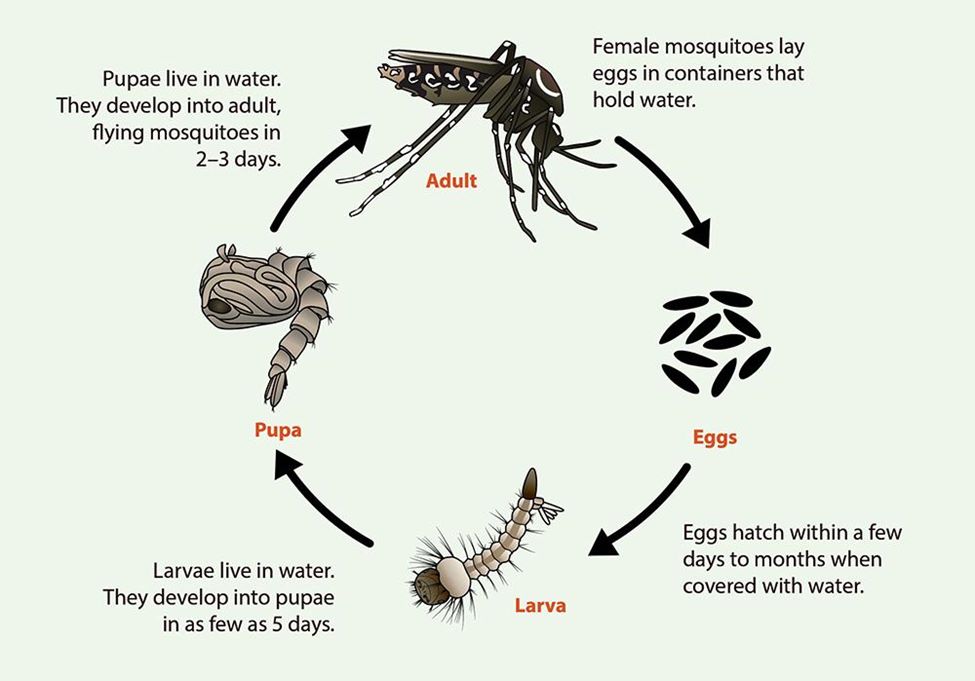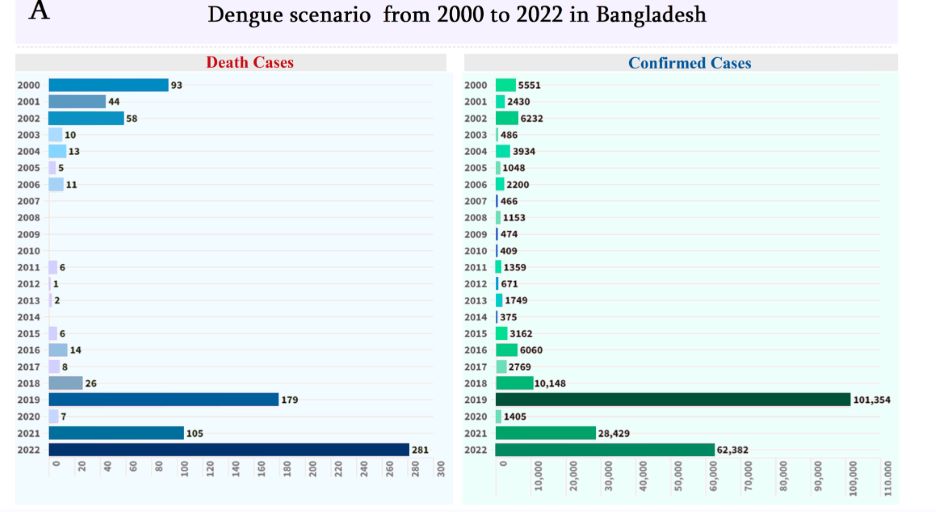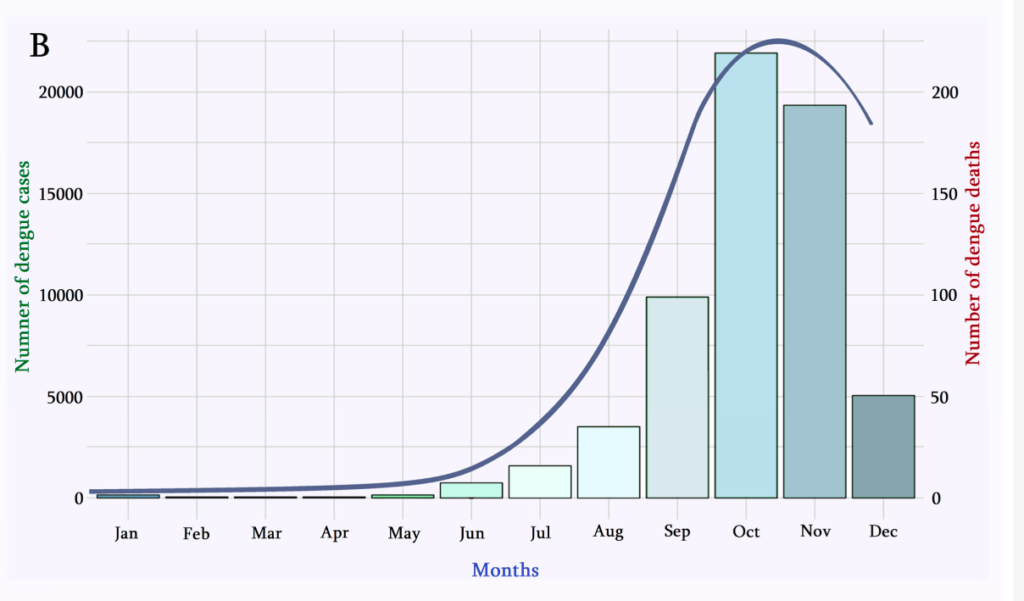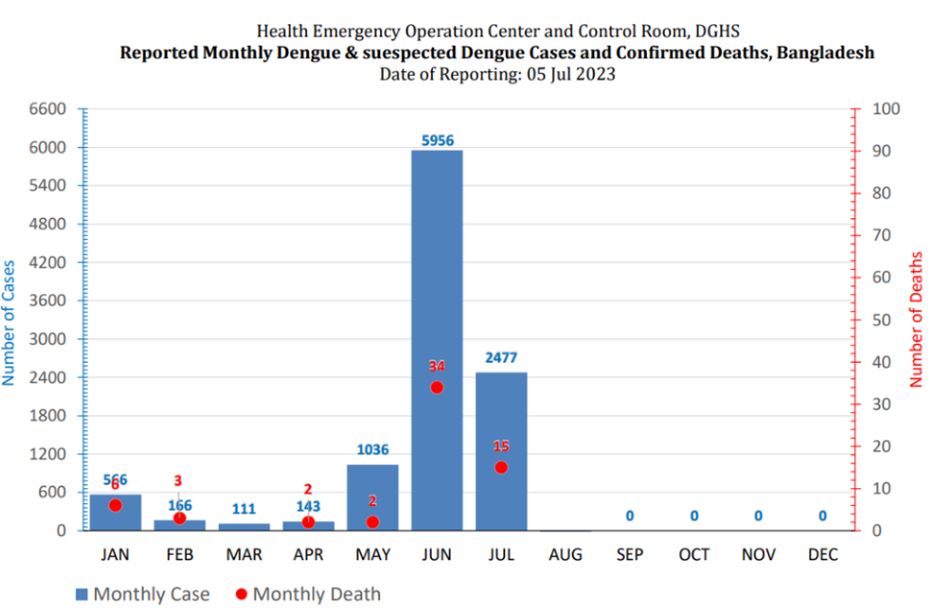[This short article was the champion of a competition named “Synapse: Where Science meets Art”, hosted by BRAC University Natural Sciences Club (BUNSC)]
Introduction
Dengue fever in Bangladesh which is a mosquito-borne infectious disease, poses a significant public health threat. With its warm and humid climate, ideal mosquito breeding grounds, and densely populated urban centers, the country faces a constant battle against dengue outbreaks. This article delves into the complexities of dengue fever in Bangladesh, exploring its causes, impacts, and the progress made in its prevention and control.
Understanding Dengue Fever
Dengue fever is caused by four distinct serotypes of the dengue virus (DENV-1, DENV-2, DENV-3, and DENV-4), transmitted through the bite of infected female Aedes aegypti and Aedes albopictus mosquitoes (World Health Organization, 2023). The disease manifests with a range of symptoms, including high fever, severe headaches, muscle and joint pain, rash, and nausea. In some cases, dengue can progress to a more severe form, known as dengue hemorrhagic fever (DHF), characterized by internal bleeding and shock (Centers for Disease Control and Prevention, 2023).
Advances in Pathogenesis
Advancements in medical research have shed light on the complex pathogenesis of dengue fever. The infection begins with the virus entering the bloodstream through mosquito saliva. It then replicates in various immune cells, leading to cytokine storms, which cause severe inflammation and vascular leakage. Moreover, the virus appears to have evolved mechanisms to evade the immune system, exacerbating the disease severity in secondary infections. Understanding these mechanisms has paved the way for targeted therapies and vaccine development.

Causes and Risk Factors
Several factors contribute to the high burden of dengue fever in Bangladesh. The country’s tropical climate provides favorable conditions for mosquito breeding year-round. Rapid urbanization and inadequate sanitation infrastructure create ideal breeding grounds for mosquitoes in densely populated areas (Hasan et al., 2019). Additionally, limited access to clean water and awareness about mosquito control measures further exacerbate the problem.
Impacts of Dengue Fever
Dengue fever poses a significant public health threat in Bangladesh. Every year, the country witnesses outbreaks, leading to thousands of hospitalizations and deaths (Institute of Epidemiology, Disease Control and Research, 2023). The economic burden of dengue is substantial, affecting both individuals and the healthcare system. Additionally, the disease can have severe social and psychological impacts, particularly on children and families who experience its devastating consequences.



Progress in Dengue Prevention and Control
Despite the challenges, Bangladesh has made significant strides in combating dengue fever. The government has implemented a multi-pronged approach, including:
- Vector control: This involves measures like source reduction (eliminating mosquito breeding grounds), insecticide spraying, and larviciding.
- Surveillance and early warning systems: Timely identification and reporting of cases enable prompt response and control measures.
- Public awareness campaigns: Educating the public about mosquito control practices and preventive measures is crucial for preventing outbreaks.
- Improved healthcare services: Strengthening healthcare facilities and training medical personnel to effectively diagnose and manage dengue cases.
- Research and development: Ongoing research efforts focus on developing new diagnostic tools, vaccines, and vector control strategies.
The results of these efforts are evident in the declining trend of dengue cases and deaths in recent years (Institute of Epidemiology, Disease Control and Research, 2023). However, challenges remain, demanding continued commitment and innovation in dengue prevention and control efforts.
Future Directions
Moving forward, focusing on the following areas is crucial to further reduce the burden of dengue fever in Bangladesh:
- Strengthening vector control programs: This includes sustainable and integrated approaches that target both larval and adult mosquitoes.
- Investing in research and development: Continued research is essential for developing effective vaccines, diagnostic tools, and innovative vector control strategies.
- Promoting community engagement: Fostering community ownership and participation in dengue prevention activities is key to achieving long-term success.
- Enhancing health systems preparedness: Strengthening healthcare infrastructure and ensuring adequate resources to manage dengue outbreaks effectively.
- Addressing climate change impacts: Integrating climate change considerations into dengue control strategies is critical for long-term sustainability.
Conclusion
Dengue fever remains a significant public health concern in Bangladesh. However, the country has made remarkable progress in combating this disease through multi-pronged interventions. By strengthening existing strategies, investing in research, and fostering community engagement, Bangladesh can continue to reduce the burden of dengue fever and protect the health of its citizens.
References:
- Aedes aegypti and Ae. albopictus Mosquito Life Cycles | CDC. (2022). Centers for Disease Control and Prevention. https://www.cdc.gov/mosquitoes/about/life-cycles/aedes.html
- Centers for Disease Control and Prevention. (2023, August 22). Dengue. Centers for Disease Control and Prevention. https://www.cdc.gov/dengue/index.html
- Hasan, M. M., Khan, M. S., Hasan, M. R., Islam, M. S., & Parvez, M. N. (2019). Dengue fever in Bangladesh: A review. Journal of Medicine, 20(1), 33-42.
- Institute of Epidemiology, Disease Control and Research. (2023). Dengue Fever Situation. iedcr.gov.bd
- World Health Organization. (2023, September 7). Dengue and severe dengue. World Health Organization. Who.int
If you like this article, you can go through our other top articles
- Vaccination: Debunking Some Common Myths – https://learnlifescience.com/vaccination-debunking-some-common-myths/
- DNA Sequencing Methods – https://learnlifescience.com/dna-sequencing-methods/
- Biosensors as a Disease Diagnostic Tool: A Comprehensive Review – https://learnlifescience.com/biosensors-as-a-disease-diagnostic-tool-a-comprehensive-review/
- An Overview of Bacterial Genomic DNA Isolation – https://learnlifescience.com/an-overview-of-bacterial-genomic-dna-isolation/
“Since the article has been written to reflect the actual views and capabilities of the author(s), they are not revised for content and only lightly edited to be confirmed with the Learn life sciences style guidelines”










